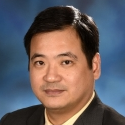Peripheral Nerve Regeneration: From Bench to Bedside
A special issue of International Journal of Molecular Sciences (ISSN 1422-0067). This special issue belongs to the section "Molecular Pathology, Diagnostics, and Therapeutics".
Deadline for manuscript submissions: closed (31 December 2016) | Viewed by 76843
Special Issue Editor
2. Department of Biomedical Engineering, Anesthesiology and Critical Care Medicine, Johns Hopkins University School of Medicine, Baltimore, MD, USA
Interests: brain monitoring and therapeutic hypothermia; peripheral nerve injury and regeneration; translational therapeutic model for neurological injuries; development and characterization of biomaterials for bone and peripheral nerve regeneration
Special Issues, Collections and Topics in MDPI journals
Special Issue Information
Dear Colleagues,
Peripheral nerve injuries remain a significant source of long lasting morbidity, disability, and economics costs. Much research continues to be performed in areas related to improving the surgical outcomes of peripheral nerve repair. Although many approaches to enhance peripheral nerve regeneration have not outperformed the ‘gold standard' set by autograft procedures, studies over the past few decades have resulted in several clinically available bioabsorbable conduits and novel peripheral nerve interfaces. Among the most exciting research areas, stem cell biology recently burst out and holds significant promise in the repair of neurological injuries. The understanding of stem cell differentiation, homing, neurotrophic factors secretion and novel repair material, and the ability to mobilize endogenous stem cells to assist peripheral nerve regeneration constitute key points of research interest in nerve regeneration.
The goal of this special issue is to provide a summary of the field, describe its impact as well as introduce the recent advances in the basic and translational research of peripheral nerve injury from bench to bedside. We invite authors to submit original research and review articles related to peripheral nerve injury; mainly basic and translational research, but also clinical studies. We are interested in articles that explore the advances in neuroengineering and latest technologies in promoting peripheral nerve regeneration from translational model to clinical evaluation, such as electrophysiological monitoring and optogenesis technique. This issue will address novel therapeutic intervention in humans and also in animal models, and seek to determine the role of stem cells from widespread sources in the complex process of peripheral nerve regeneration.
Prof. Dr. Xiaofeng Jia
Guest Editor
Manuscript Submission Information
Manuscripts should be submitted online at www.mdpi.com by registering and logging in to this website. Once you are registered, click here to go to the submission form. Manuscripts can be submitted until the deadline. All submissions that pass pre-check are peer-reviewed. Accepted papers will be published continuously in the journal (as soon as accepted) and will be listed together on the special issue website. Research articles, review articles as well as short communications are invited. For planned papers, a title and short abstract (about 250 words) can be sent to the Editorial Office for assessment.
Submitted manuscripts should not have been published previously, nor be under consideration for publication elsewhere (except conference proceedings papers). All manuscripts are thoroughly refereed through a single-blind peer-review process. A guide for authors and other relevant information for submission of manuscripts is available on the Instructions for Authors page. International Journal of Molecular Sciences is an international peer-reviewed open access semimonthly journal published by MDPI.
Please visit the Instructions for Authors page before submitting a manuscript. There is an Article Processing Charge (APC) for publication in this open access journal. For details about the APC please see here. Submitted papers should be well formatted and use good English. Authors may use MDPI's English editing service prior to publication or during author revisions.
Keywords
- peripheral nerve injury
- nerve regeneration
- stem cell
- nerve scaffold
- 3D printing
- growth factors
- electrophysiology
- cell biology
- signaling pathway
- optogenesis
- translational model
- functional outcome
- neuroengineering
- clinical evaluation
Benefits of Publishing in a Special Issue
- Ease of navigation: Grouping papers by topic helps scholars navigate broad scope journals more efficiently.
- Greater discoverability: Special Issues support the reach and impact of scientific research. Articles in Special Issues are more discoverable and cited more frequently.
- Expansion of research network: Special Issues facilitate connections among authors, fostering scientific collaborations.
- External promotion: Articles in Special Issues are often promoted through the journal's social media, increasing their visibility.
- Reprint: MDPI Books provides the opportunity to republish successful Special Issues in book format, both online and in print.
Further information on MDPI's Special Issue policies can be found here.






